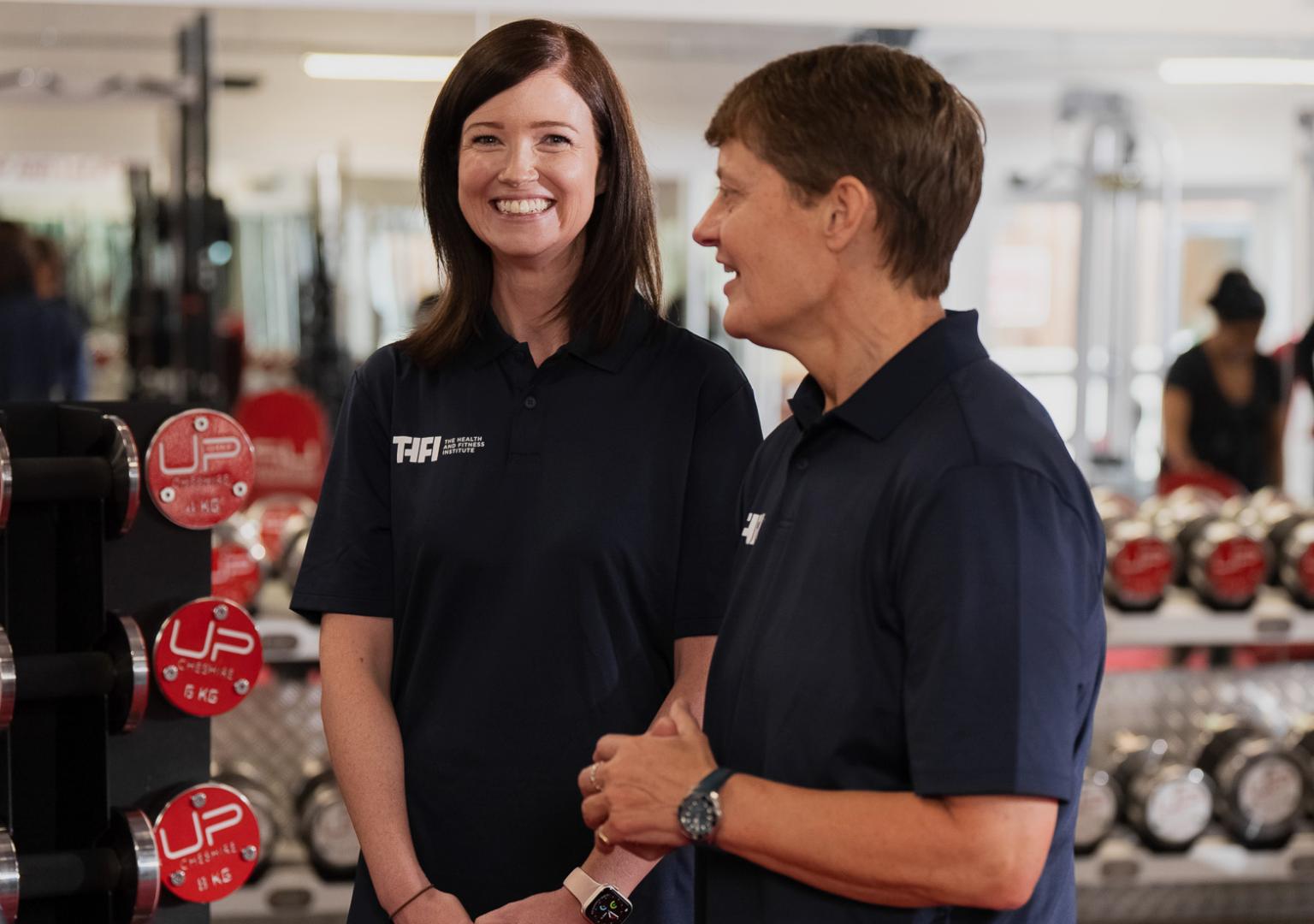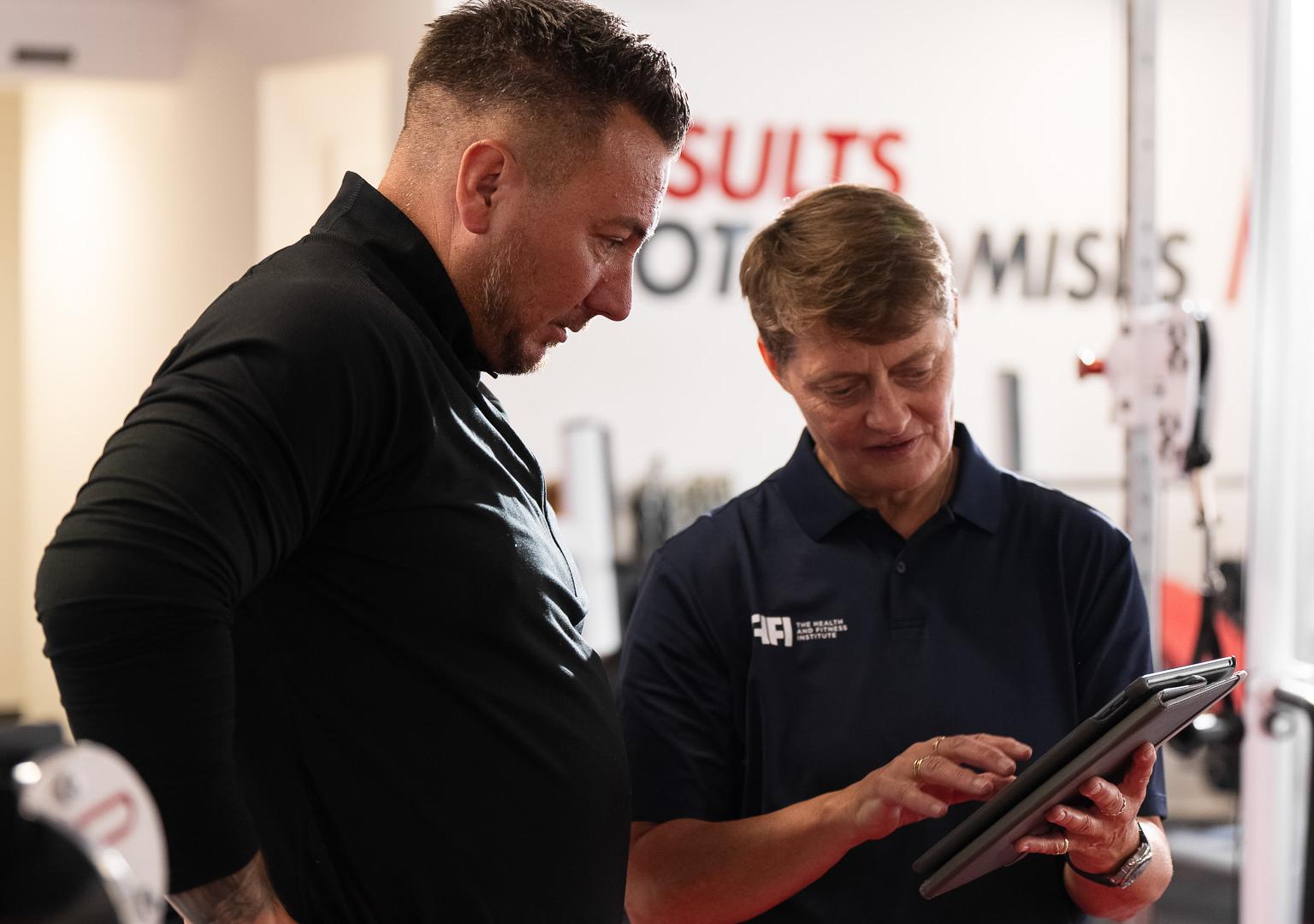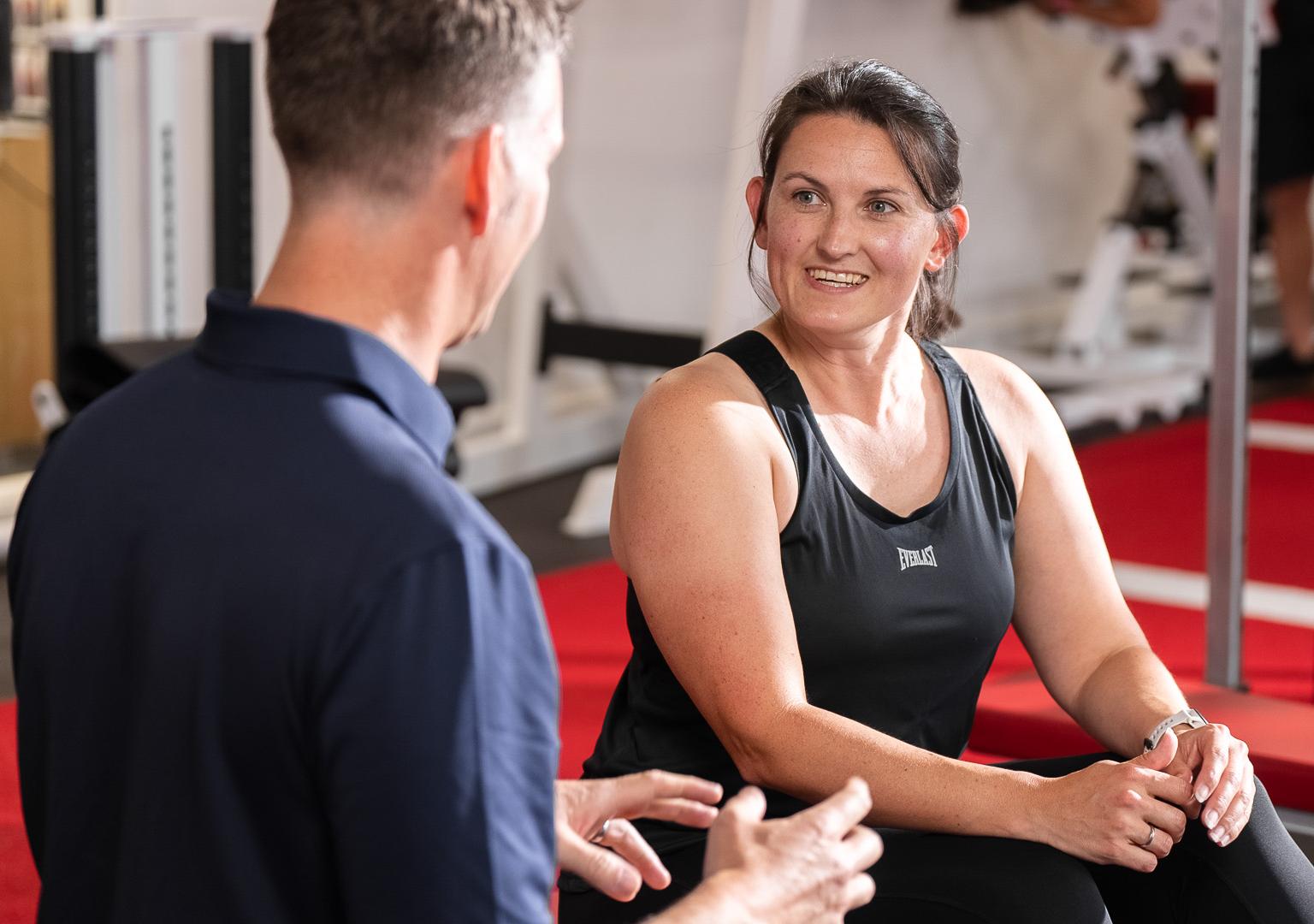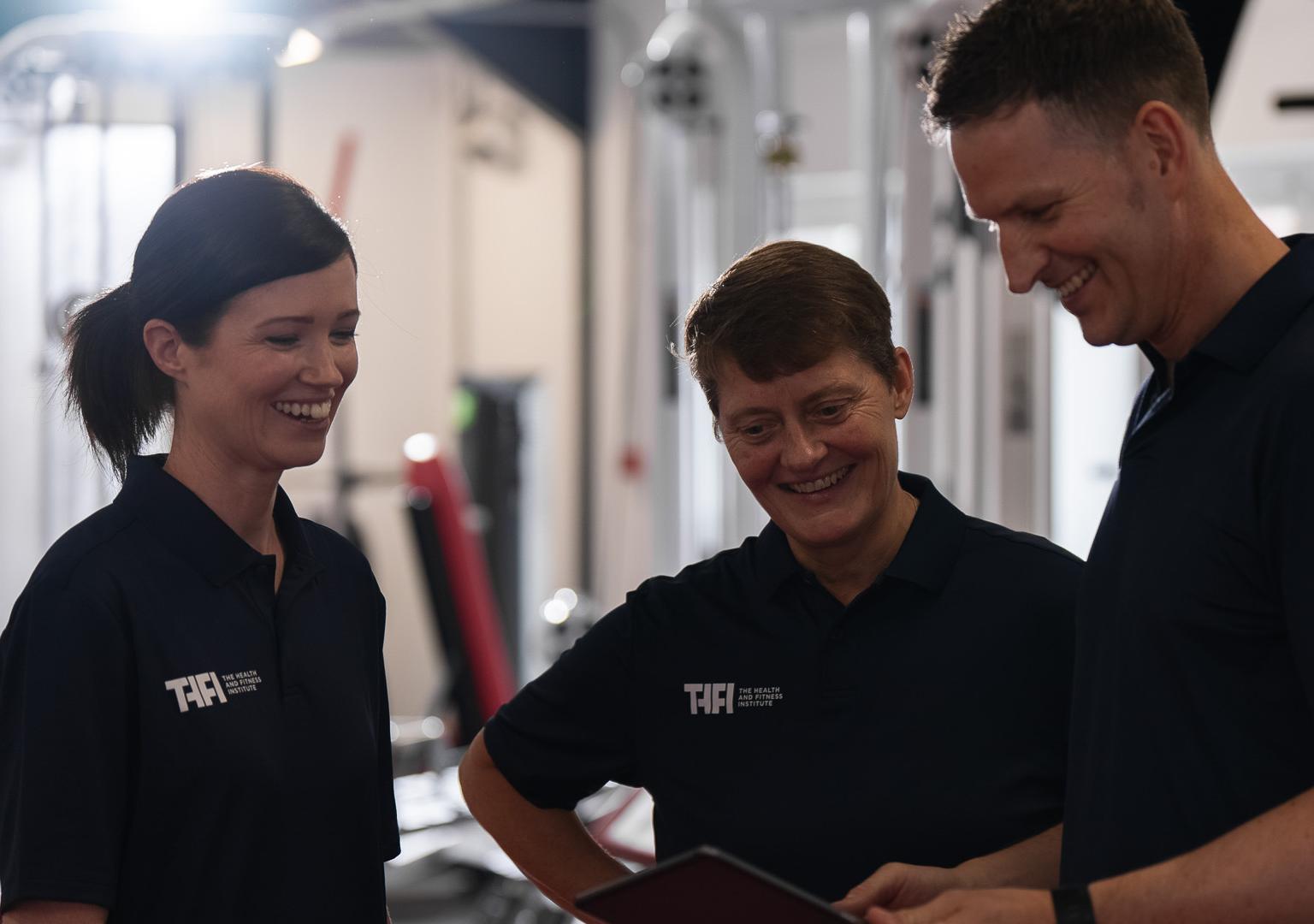How to Design Training Programs for Women

Want to create better training programs that deliver better results for your female clients?
It’s not simply about throwing a few different exercises into your workouts. And a ‘one size fits all approach’ isn’t going to cut it.
Because what works for your twenty-something male clients isn’t going to be right for the fifty-something mother-of-two.
There are real physiological differences you need to understand when you work with women.
And differences in goals, preferences, and coaching styles that will all influence what you do in the gym day to day as a personal trainer.
This article explore these differences – from estrogen, metabolism, and muscle-fibre types, to group training vs PT for women – to arm you with knowledge that will improve the way you create training programs for your female clients.
Section 1: Physiological Differences
Embracing Physiological Diversity
When it comes to training women, it's essential to embrace and understand the physiological diversity that sets them apart. This understanding will allow you to create training programs that cater to their specific needs and goals.
Understanding Hormonal Influences
Subtopic 1: The Role of Estrogen and Its Impact on Metabolism
Estrogen, often referred to as the primary female sex hormone, plays a pivotal role in women's physiology. Beyond its reproductive functions, estrogen has a significant impact on metabolism. It affects how women store and burn fat, making it a critical factor to consider when designing training programs.
Estrogen's influence on metabolism means that women may have different energy needs and dietary requirements at various stages of their menstrual cycles. During certain phases, women may find it easier to shed fat, while in others, they might feel hungrier or lower on energy.
Understanding these hormonal fluctuations allows you to fine-tune nutrition and exercise plans to maximise your female clients' results. You can develop strategies that align with their specific metabolic states, helping them achieve their fitness goals more effectively.
Subtopic 2: How Hormonal Fluctuations Affect Energy Levels
In addition to metabolism, hormonal fluctuations can significantly impact energy levels in women. Many female clients experience changes in energy, mood, and motivation throughout their menstrual cycles. These fluctuations can affect their performance and enthusiasm for training.
By recognising these variations and adjusting your training programs accordingly, you can help your clients maintain consistency in their workouts. Providing tailored guidance during times of lower energy can be the key to keeping them on track and motivated to achieve their goals.
Muscle Composition
Subtopic 1: Type I vs. Type II Muscle Fibres in Women
Another crucial factor to consider is muscle composition. Women tend to have a different distribution of muscle fibre types compared to men. Understanding this distinction can help you customise strength training programs for female clients.
Type I muscle fibres are associated with endurance and are more abundant in women. In contrast, Type II fibres are responsible for explosive power and strength and are less prevalent in women. This difference in muscle fibre distribution can influence training intensity, recovery needs, and exercise selection.
Subtopic 2: Building Lean Muscle Mass Effectively
While women may have a higher proportion of Type I muscle fibres, it's entirely possible for them to build lean muscle mass effectively. Your role as a personal trainer is to guide them through targeted resistance training and nutrition strategies.
By designing resistance training programs that focus on hypertrophy and strength gains, you can help women overcome the misconception that lifting heavy weights will make them bulky. Educating your clients about the benefits of lean muscle mass, such as increased metabolism and improved body composition, is crucial in building their confidence and commitment to training.
Section 2: Setting Goals and Preferences
Now that we've explored the essential physiological differences between men and women, it's time to delve into the art of setting clear fitness goals and addressing individual preferences with your female clients. This aspect of designing training programs is where the true personalisation happens, allowing you to create workouts that resonate with their aspirations and desires.
Identifying Individual Objectives
Discussing Fitness Goals with Female Clients
Subtopic 1: Weight Loss and Strength
When working with female clients, one of your primary responsibilities is to engage in meaningful conversations about their fitness goals. For many women, these goals often revolve around achieving a specific body composition, which may include weight loss, enhancing overall strength, or building a firmer figure.
Insight: According to a study by the American Psychological Association, setting specific goals significantly increases the likelihood of achieving them. In fact, individuals who set clear goals are 10 times more likely to see positive changes in their fitness outcomes. (1)
As a personal trainer, you should encourage your clients to articulate their objectives precisely. Are they looking to shed excess pounds, sculpt lean muscles, or gain strength for functional purposes? By understanding their aspirations, you can tailor training programs that align with these goals.
Subtopic 2: Improving Overall Health and Well-being
While aesthetic goals are essential, many female clients also seek to improve their overall health and well-being. They may want to enhance their cardiovascular fitness, boost their energy levels, or reduce stress through exercise.
Tip: As you discuss health-related goals with your clients, consider using fitness assessments to track progress and demonstrate tangible improvements in areas like cardiovascular endurance, flexibility, and stress reduction.
Addressing these goals requires a holistic approach to training. You can incorporate a variety of exercises, such as yoga, Pilates, or high-intensity interval training (HIIT), to cater to their specific needs. Remember that improving health and well-being is not solely about the number on the scale but about achieving a sense of vitality and balance.
Addressing Preferences
Subtopic 1: Group Classes vs. One-on-One Training
Understanding your female clients' preferences is equally vital in designing effective training programs. Some women thrive in group settings, feeding off the energy and camaraderie of fellow participants. Others may prefer the focused attention and personalised guidance of one-on-one training sessions.
Insight: The Journal of Sports Science & Medicine suggests that group exercise can boost motivation and adherence to fitness programs. However, individual training may offer more customisation and tailored support. (2)
During your initial consultations, ask your clients about their comfort zones and what type of training environment they prefer. Are they drawn to the community aspect of group classes, or do they appreciate the accountability of individual sessions? By respecting their preferences, you create a training experience that they genuinely enjoy.
Subtopic 2: Nutrition and Dietary Preferences
Nutrition plays a pivotal role in achieving fitness goals. Female clients may have unique dietary preferences and restrictions, ranging from vegetarian or vegan lifestyles to food allergies or sensitivities.
To accommodate these preferences, work closely with your clients to develop good nutrition habits that align with their fitness goals. Empower them with knowledge about balanced eating, portion control, and the importance of macronutrients. Encourage open dialogue about their dietary choices, and provide practical tips for making healthier food decisions.
Section 3: Designing Effective Training Programs
Now that you've laid the foundation by understanding the physiological differences and individual preferences of your female clients, it's time to craft training programs that deliver exceptional results. The key to success here lies in personalisation – tailoring workouts to meet their unique needs, fitness levels, and preferences.
Personalisation is Key
Tailoring Workouts to Individual Needs
Subtopic 1: Adapting Workouts for Different Fitness Levels
Every client is unique, and their fitness levels can vary significantly. As a personal trainer, your expertise lies in adapting workouts to cater to these differences, ensuring that each woman you work with experiences progress and success.
Tip: Utilise fitness assessments and regularly review progress to adjust workouts accordingly. The Journal of Strength and Conditioning Research highlights the importance of periodisation in training programs to optimise results.
For beginners, start with foundational exercises that build strength, stability, and confidence. Gradually progress the intensity and complexity of the workouts as they advance. For those already well-versed in fitness, challenge them with advanced techniques and exercises that keep them engaged and motivated.
Subtopic 2: Integrating Variety to Keep Motivation High
Variety is the spice of life, and it's equally important when it comes to creating fitness programs for you clients.
While it’s important to have a consistent program so you can measure progress over time, it can be useful to find was to add in variety to prevent workout boredom and keep motivation high.
Insight: The International Journal of Sports Science & Coaching suggests that varied training not only keeps clients engaged but also reduces the risk of overuse injuries associated with repetitive movements. (3)
Incorporate elements such as strength training, cardiovascular workouts, flexibility sessions, and even fun activities like dance or sports. Listen to your clients' feedback and be open to trying new approaches to keep their fitness journeys exciting and enjoyable.
Nutrition and Recovery Strategies
Subtopic 1: Discussing Nutritional Requirements
Nutrition and exercise are inseparable components of achieving fitness goals. While you're not a dietitian, you can play a crucial role in educating your clients about their nutritional requirements.
Tip: Encourage clients to maintain food journals or consult a registered dietitian for a comprehensive nutrition plan.
Discuss the importance of balanced eating, portion control, and macronutrients. Tailor your advice to their goals—whether it's fuelling workouts for strength gains, supporting weight loss through calorie deficit, or ensuring optimal recovery through post-workout nutrition.
Subtopic 2: Emphasizing the Importance of Rest and Recovery
In the pursuit of fitness goals, it's easy to overlook the significance of rest and recovery. Educate your clients about the vital role these factors play in achieving their desired outcomes.
Insight: A study published in the Journal of Applied Physiology found that adequate rest and recovery are essential for muscle growth and overall performance improvement. (4)
Emphasise the importance of quality sleep, active recovery days, and stress management techniques. Encourage clients to listen to their bodies, recognise signs of overtraining, and grant themselves the necessary recovery time. Incorporate stretching and relaxation techniques into your training sessions to promote recovery.
By personalising workouts and addressing nutritional and recovery strategies, you're not just creating training programs; you're curating transformative experiences for your female clients. Remember, the impact you have on their fitness journey extends beyond the gym. Your guidance and support empower them to lead healthier, happier lives.
In the final section of this guide, we'll explore the crucial aspects of communication and support that will solidify your role as an empowering personal trainer. Stay tuned for insights that will elevate your career and take your client relationships to new heights.
Section 4: Communication and Support
As a personal trainer, your role extends far beyond crafting workout programs. It involves building strong client relationships, offering guidance, and providing unwavering support throughout their fitness journey. In this section, we'll delve into the critical aspects of communication and support that will solidify your position as an empowering personal trainer.
Building Trust and Rapport
Effective Communication
Subtopic 1: Active Listening and Empathy
Effective communication begins with active listening and empathy. It's crucial to create an open and non-judgmental space where your female clients feel comfortable sharing their thoughts, concerns, and triumphs.
Insight: Research published in the Journal of Communication in Healthcare suggests that empathetic communication improves patient satisfaction and outcomes. (5)
Practice active listening by giving your full attention during consultations. Ask open-ended questions to encourage clients to express themselves. Empathise with their experiences, whether it's the challenges they face or the victories they celebrate. Show genuine interest in their well-being.
Subtopic 2: Providing Constructive Feedback
Constructive feedback is a cornerstone of effective communication. It's about offering guidance and correction in a way that empowers your clients rather than discourages them.
Tip: Use the "sandwich" approach, where you sandwich constructive feedback between positive comments. This approach fosters a growth mindset and encourages improvement.
When discussing progress or areas that require attention, frame your feedback in a constructive and solution-oriented manner. Help your clients see setbacks as opportunities for growth and learning. By offering support and solutions, you inspire them to continue their fitness journey with determination.
Creating a Supportive Environment
Subtopic 1: Fostering a Sense of Community Among Female Clients
A supportive environment can be a game-changer for female clients. Fostering a sense of community within your training sessions can boost motivation, accountability, and overall satisfaction.
Insight: A study in the journal Health Education & Behavior found that group-based exercise programs enhance social support and adherence. (6)i
Encourage interactions and camaraderie among your clients. Organise group sessions or events that allow them to connect and celebrate their successes together. Creating a supportive network empowers women to push their boundaries and achieve more than they thought possible.
Subtopic 2: Offering Emotional Support and Encouragement
While physical progress is essential, emotional well-being is equally vital. Many women face emotional challenges related to body image, self-esteem, and confidence. As their trainer, you can make a significant difference by offering emotional support and encouragement.
Tip: Empower your clients by celebrating non-scale victories, such as increased energy levels, strength or performance gains, improved mood, or enhanced self-confidence.
Acknowledge their efforts and highlight their strengths. Remind them of the reasons they embarked on their fitness journeys and the progress they've made, no matter how small. Provide encouragement during challenging workouts and be a source of inspiration when they face self-doubt.
By building trust, fostering effective communication, and creating a supportive environment, you become more than a personal trainer—you become a mentor and confidant. Your role extends beyond the gym, impacting the lives of your female clients in profound ways.
REFERENCES
- American Psychological Association. (n.d.). The power of goal setting. Retrieved January 1, 2024, from Beyond Goal Setting to Goal Flourishing.
- The Journal of Sports Science & Medicine. (n.d.). Group exercise boosts motivation and adherence. Retrieved January 1, 2024, from The experience of motivation and adherence to group-based exercise of Norwegians aged 80 and more: a qualitative study.
- The International Journal of Sports Science & Coaching. (n.d.). Variety in training: Engagement and injury prevention. Retrieved January 1, 2024, from Methodological intervention with soccer coaches to improve athlete engagement and injury prevention.
- The Journal of Applied Physiology. (n.d.). The significance of rest and recovery in muscle growth and performance improvement. Retrieved January 1, 2024, from Exercise-induced muscle damage: mechanism, assessment and nutritional factors to accelerate recovery.
- Journal of Communication in Healthcare. (n.d.). The impact of empathetic communication on patient satisfaction and outcomes. Retrieved January 1, 2024, from Effective Communication Plays a Key Role in Patient Satisfaction.
- Health Education & Behavior. (n.d.). The benefits of group-based exercise programs. Retrieved January 1, 2024, from Group-Based Physical Activity for Older Adults (GOAL) Randomized Controlled Trial: Exercise Adherence Outcomes.








